Choosing and Using Wood Fuels: A Practical Guide
- December 22, 2023
- 0 comment
There’s an undeniable charm in warming yourself by a crackling wood fire, especially after a long day outdoors. However, the comfort of a wood stove comes with its share of labor – cutting, splitting, stacking, and seasoning wood, or at least buying and storing it. This guide aims to simplify that process, offering alternative wood fuel options that minimize the workload while maximizing warmth and efficiency.
3 Types of Wood Fuel
1. Traditional Firewood
Pros of Traditional Firewood
The aesthetic appeal of traditional firewood is unparalleled, as it creates a visual and sensory experience that’s both warm and inviting. The natural look of logs burning in a fireplace, accompanied by the soothing sounds of crackling wood and the distinctive smell of smoke, adds a rustic charm that artificial logs in pellet or gas stoves simply cannot match. This ambiance makes firewood an excellent choice for those who value the aesthetic aspect of a fireplace.
Beyond its beauty, the process of preparing firewood can be therapeutic and physically rewarding. For individuals who spend most of their day in sedentary indoor jobs, engaging in the physical activity of chopping and handling wood can be a welcome change. It offers a sense of connection to nature and traditional ways of living, making it a mentally and physically fulfilling activity.
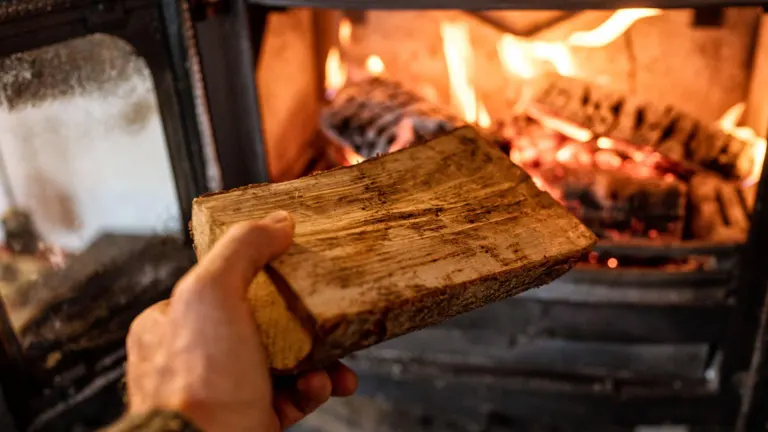
From a cost perspective, firewood can be highly economical, particularly if you have the means to source your own wood. This not only makes it a budget-friendly option but also contributes to the management and health of your property by clearing out excess trees and brush. Even for those who purchase firewood, it generally remains a more affordable option compared to other heating fuels.
In terms of reliability, traditional firewood excels as it does not depend on electricity. This makes wood stoves incredibly reliable during power outages, which can be a common occurrence in areas with harsh winter conditions. The ability to heat your home independently of the power grid is a significant advantage of using firewood, ensuring warmth and comfort even in adverse weather.
Cons of Traditional Firewood
However, the use of traditional firewood comes with significant labor demands. The entire process from cutting, splitting, and stacking to seasoning the wood is physically taxing. It requires a considerable time commitment and physical strength, which might not be feasible for everyone. Regular maintenance, such as feeding the fire and cleaning up ashes, adds to the ongoing effort required to keep a wood stove running efficiently.
Storage is another challenge when it comes to firewood. It is not space-efficient and requires a significant amount of room for both drying and long-term storage. This is a crucial aspect to consider, as improperly stored wood can rot or become infested with pests. The need for a dry, ventilated storage area, such as a large shed or lean-to, is often necessary, which can be a limitation for those with smaller properties or living in urban environments.
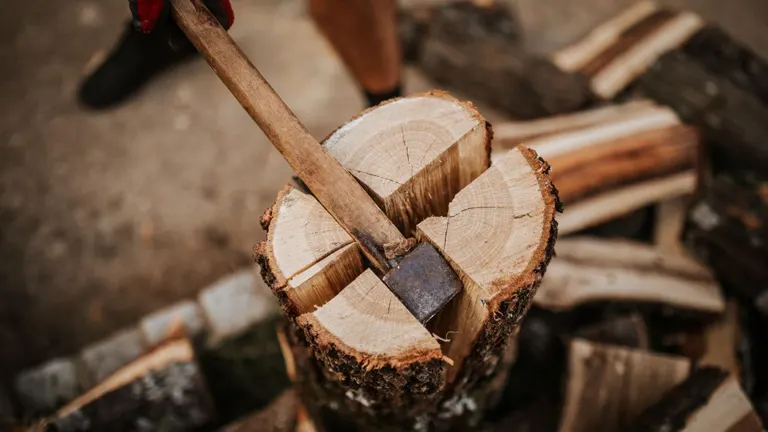
The mess associated with firewood can be a deterrent for many. From bark and dirt trails to ash accumulation around the stove, firewood can significantly increase housekeeping duties. Regular cleaning to remove these residues is essential for maintaining a clean and safe home environment.
Lastly, handling firewood can be challenging, especially for certain demographics. The weight and bulkiness of logs can make them difficult to transport and maneuver, particularly for older adults or individuals with physical limitations. Additionally, fitting irregularly shaped or overly long logs into a stove can be frustrating and time-consuming, detracting from the overall convenience of using a wood stove.
2. Wood Pellets
Pros of Wood Pellets
Wood pellets offer a modern solution to home heating with several distinct advantages. Their ease of storage is a significant benefit. Pellets are typically sold in compact bags, making them space-efficient and straightforward to handle. This convenience is a stark contrast to the bulky and space-consuming nature of traditional firewood.
Another notable advantage of wood pellets is their clean-burning nature. They produce significantly less mess and ash compared to traditional wood, making them a more hygienic and low-maintenance option for home heating. This feature also translates to easier cleanup and reduced frequency of stove and chimney cleaning.
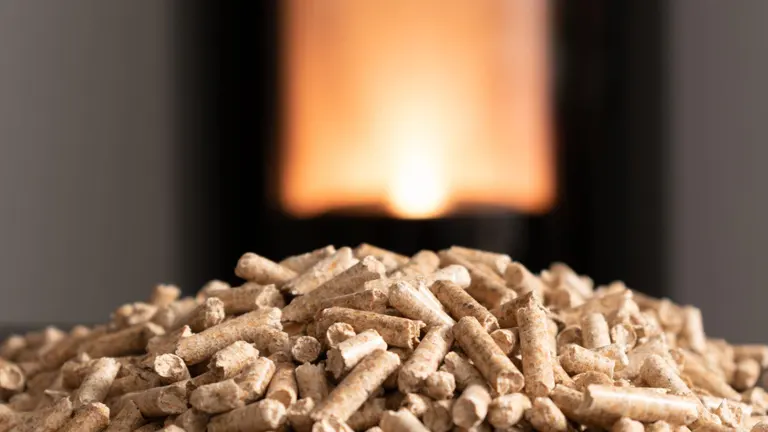
In terms of efficiency, wood pellets stand out. They are designed to burn more efficiently, meaning they provide more heat output per unit of material compared to traditional firewood. This efficiency not only makes them a cost-effective option but also contributes to a more environmentally friendly heating solution by reducing waste and emissions.
The convenience offered by pellet stoves is a further advantage. Many modern pellet stoves come equipped with self-feeding mechanisms and can be programmable. This allows for a consistent heat output without the constant need for manual feeding, a stark contrast to the labor-intensive nature of maintaining a traditional wood fire.
Cons of Wood Pellets
Despite these advantages, wood pellets do have some drawbacks. A significant downside is their lack of aesthetic and olfactory appeal. While pellet stoves are efficient, they can’t replicate the visual charm and distinct smell of a real wood fire. This can be a deal-breaker for those who value the traditional fireplace experience.
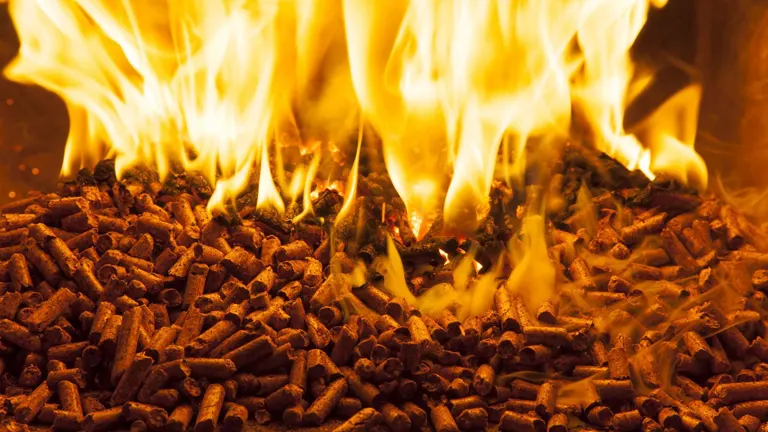
Spillage issues are another concern. Once a bag of pellets is opened, there’s a risk of spillage, which can lead to a mess that needs cleaning up. This can be particularly inconvenient if the pellets are stored indoors or in an area where cleanliness is a priority.
Lastly, the requirement for a specific type of stove limits the versatility of wood pellets. Unlike traditional firewood that can be burned in various types of stoves and fireplaces, wood pellets require a dedicated pellet stove. Moreover, these stoves often rely on electricity to operate their mechanical components, which could be a limitation during power outages and adds an additional cost to their operation.
3. Bio Block Briquettes
Pros of Bio Block Briquettes
Another significant benefit is the reduced labor involved. Bio Blocks come ready to use straight out of the packaging, eliminating the need for the time-consuming and physically demanding tasks of cutting, splitting, and seasoning associated with traditional firewood. This feature makes them particularly appealing for those who want the warmth of a wood fire without the associated hard work.
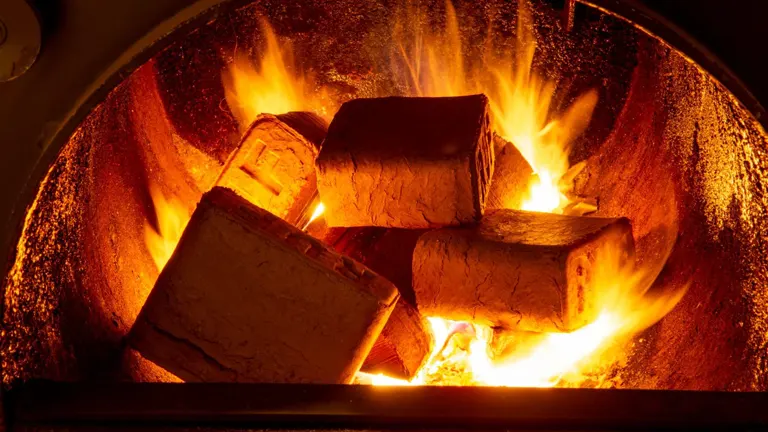
In terms of cleanliness and efficiency, Bio Blocks excel. They are designed to produce minimal mess and ash, which translates into easier cleanup and less frequent maintenance of the stove and chimney. Moreover, they offer a high heat output, making them an efficient choice for heating. This efficiency not only provides more warmth but also contributes to less fuel consumption and, consequently, reduced environmental impact.
The versatility of Bio Blocks is another key advantage. Unlike wood pellets that require a specific type of stove, Bio Blocks can be burned in any traditional wood stove and are also suitable for outdoor use, like in fire pits or campfires. This flexibility allows them to be a versatile option for various heating needs.
Cons of Bio Block Briquettes
However, Bio Blocks do have certain limitations. One notable drawback is their aesthetic shortcomings. While they are practical, they lack the natural appearance and traditional charm of conventional logs. For those who value the visual aspect of a wood fire, this can be a significant downside.
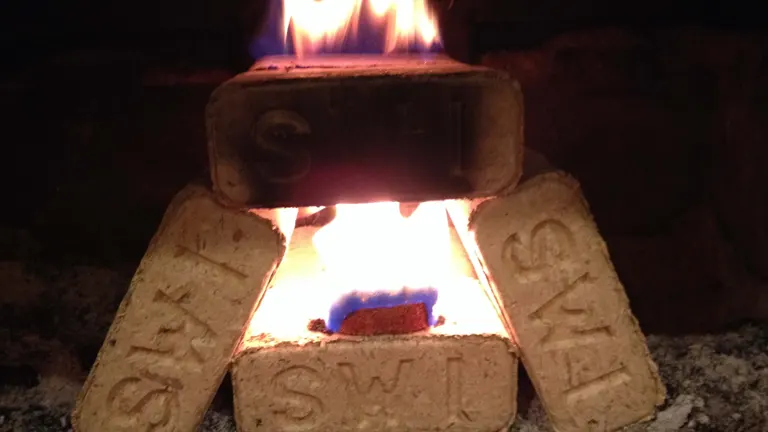
Another concern with Bio Block Briquettes is their sensitivity to moisture. They can easily disintegrate when exposed to water or high humidity, which necessitates careful storage. Ensuring that they remain dry can be a challenge, particularly in damp climates or during certain seasons, and may require additional considerations for storage solutions.
Conclusion: Selecting the Ideal Wood Fuel for Your Home
The decision to choose the right wood fuel hinges on a balance between your personal needs, preferences, and lifestyle. Each type of wood fuel – traditional firewood, wood pellets, and Bio Block Briquettes – offers unique advantages and comes with its own set of considerations.
Traditional wood logs are unbeatable if you’re drawn to the authentic ambiance of a real wood fire. They are ideal for those who appreciate the aesthetic appeal and sensory experience of a traditional fireplace and are willing to put in the extra effort for that genuine wood-burning experience.
On the other hand, wood pellets represent a more modern and low-maintenance heating solution. They are perfect for those who prioritize ease of use, efficiency, and cleanliness over the traditional aspects of wood heating. Pellet stoves, with their self-feeding mechanisms and programmable features, offer a convenient and hassle-free way to keep your home warm.
Bio Block Briquettes strike a middle ground, offering a blend of convenience and the feel of a traditional wood stove. They are an excellent choice for individuals seeking ease of use and storage, combined with the efficiency and versatility of being able to use them in any wood stove or outdoor setting.
Ultimately, the choice of wood fuel should enhance your living experience, making heating not just a necessity but a comfortable and enjoyable part of your home life. Whether you lean towards the charm and ritual of traditional firewood, the convenience of wood pellets, or the practicality of Bio Block Briquettes, the right wood fuel can transform heating from a mere chore into an enriching and cozy aspect of your daily routine.
Related Articles:
- How To Deal With Backdraft Issues in Wood Stoves and Fireplaces
- Choosing the Right Wood Stove for Your Off-Grid Cabin: A Size Guide
- RV Wood Stove Kit: Roof-Ready Flue Kits for Complete Van & RV Installations
- How to Move a Wood Stove Safely and Securely
- How to Ensure Proper Ventilation and Airflow for Your Wood Stove
- How to Get Wood Stove Heat to Other Rooms: A Comprehensive Guide
- How to Choose the Best Wood Stove Pipe
FAQs
- Can I use wood pellets in a traditional wood stove?
No, wood pellets require a specific type of stove, known as a pellet stove, for efficient and safe burning. They cannot be used in traditional wood stoves due to differences in fuel handling and combustion requirements. - How long do Bio Block Briquettes burn compared to traditional firewood?
Bio Block Briquettes typically burn longer and more consistently than traditional firewood due to their density and uniformity. The exact burn time can vary based on the stove’s efficiency and the briquettes’ composition. - Are wood pellets environmentally friendly?
Yes, wood pellets are considered environmentally friendly as they are often made from recycled wood waste, burn efficiently, and have a lower carbon footprint compared to traditional firewood. - Can I mix traditional wood logs and Bio Block Briquettes in my stove?
Yes, you can mix them, but it’s important to understand how they burn together. Bio Blocks may burn at a different rate than traditional logs, so adjustments in stove settings or monitoring might be necessary for optimal burning. - Do pellet stoves require electricity to operate?
Yes, pellet stoves require electricity to power their mechanical components like the auger that feeds pellets into the burn chamber and the fans that circulate heat. This is a consideration during power outages. - How does the cost of heating with wood pellets compare to traditional firewood?
The cost can vary based on local fuel prices, but generally, wood pellets can be more expensive than traditional firewood. However, their higher efficiency and lower maintenance might offset the initial cost difference. - Are there any special storage requirements for Bio Block Briquettes?
Yes, it’s crucial to store Bio Block Briquettes in a dry environment to prevent them from absorbing moisture, which can lead to disintegration. A covered, ventilated area is ideal. - How often should I clean my chimney if I use traditional firewood?
The frequency of cleaning depends on how often you use your fireplace or stove. It’s generally recommended to have a professional chimney sweep inspect and clean your chimney at least once a year to prevent buildup and fire hazards. - Can I use wood pellets for outdoor fires, like in a fire pit?
Wood pellets are not typically recommended for outdoor fires in open pits due to their specific burning requirements and the need for controlled feeding, which is provided by pellet stoves. - What is the main advantage of using traditional firewood over other wood fuels?
The main advantage of traditional firewood is its natural aesthetic appeal, including the visual beauty, crackling sound, and distinctive smell of a wood fire, which many find irreplaceable and deeply comforting.
We’re excited to connect with you! Please feel free to share your personal experiences and insights about the Vermont Castings Aspen C3 Wood Stove in the comments section below. Your unique perspectives and stories are invaluable, helping others in our community make informed decisions about this charming and efficient heating option. Whether it’s about its performance, ease of use, or how it fits into your home lifestyle, your input is greatly appreciated!

David Murray
Forestry AuthorI'm David Murry, a forestry equipment specialist with a focus on chainsaw operation. With over 13 years of experience, I've honed my skills in operating and maintaining a wide range of machinery, from chainsaws to log splitters. My passion for the outdoors and commitment to sustainable forestry drive my work, which emphasizes safety, efficiency, and staying updated with industry advancements. Additionally, I'm dedicated to sharing my expertise and promoting environmental awareness within the forestry community.













Leave your comment